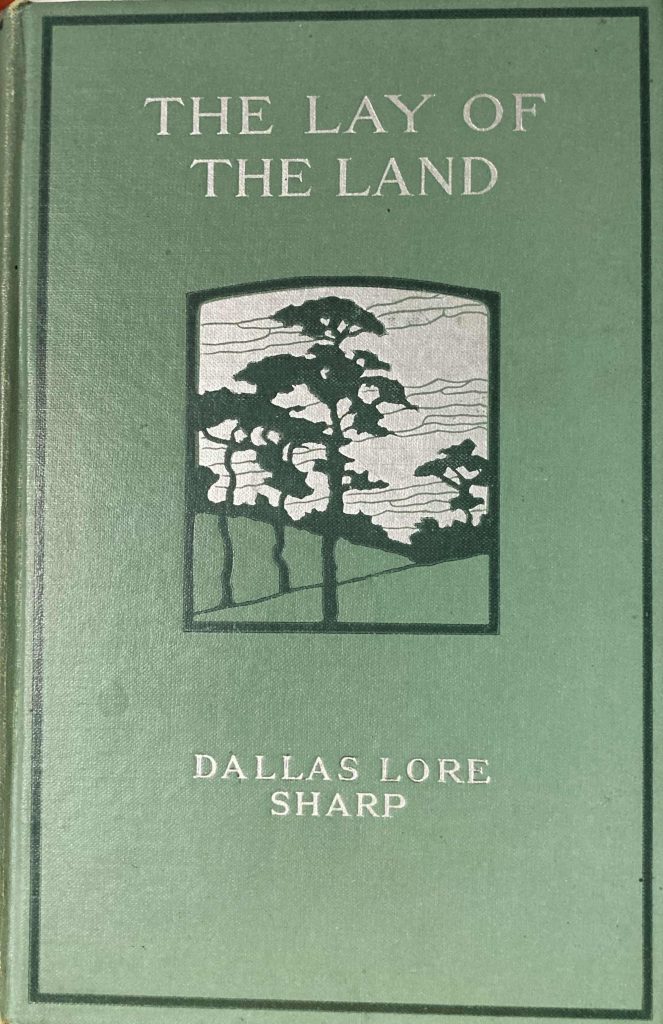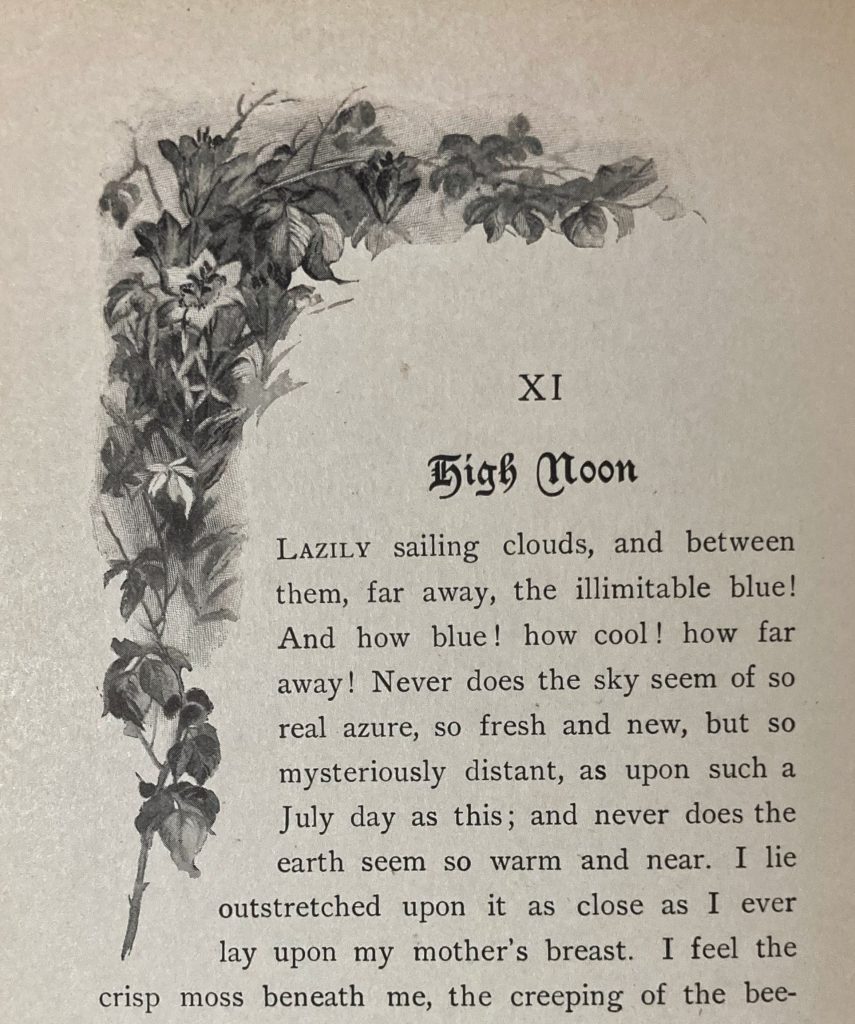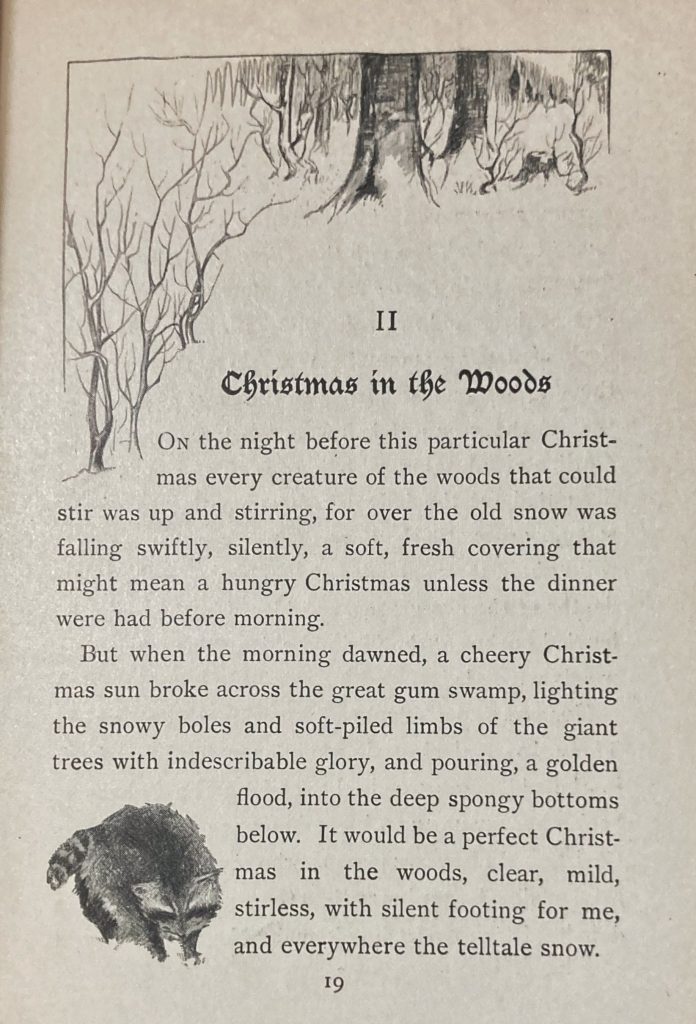
Having revisited Bradford Torrey, it seemed only proper (and fair) that I do the same for Dallas Lore Sharp, another fairly renowned (relatively speaking) of the nature essayists of natural history’s golden age. Sharp is probably most known (again, in a relative sense) for his essay, “Turtle Eggs for Agassiz” (in another volume of his, still waiting on the shelf), in which he collects turtle eggs to send to the renowned biologist, Louis Agassiz. While Torrey (and so many others) were actively writing in the 1880s and 1890s, Sharp (1870-1929) was a “late bloomer” who published his first nature book in 1901. As such, he was positioned at the height of the Nature-Study Movement and was able to survey its origins, expression, and impacts on American culture. Indeed, some of his finest essays in The Lay of the Land explore this theme. (Most of the rest of the essays offer themes relating to the various seasons of the year, from “Christmas in the Woods” to “High Noon” (late summer). Although I naturally associate Sharp with Torrey, they are dramatically different as authors. Torrey rambles through the woods and fields, making discoveries along the way; the reader often joins him on his adventures without knowing where he might end up. Sharp has a central theme about which the essay is tightly constructed; though many animals and plants may appear along the way, the central image or idea is never far from view. The prose is composed of refreshingly simple sentences, the kind that would have been to Hemmingway’s liking. There are no thickets of convoluted text here. Each essay has a refreshing clarity that goes down like a dipperful of cool water from a mountain stream. Here, for instance, is Sharp’s closing paragraph from his opening essay, “The Muskrats Are Building”:
The muskrats are building; the last of the migrating geese have gone over; the wild mice have harvested their acorns; the bees have clustered; the woodchucks are asleep; and the sap in the big hickory by the side of the house has crept down out of reach of the fingers of the frost. I will put on the storm-doors and the double windows. Even now the logs are blazing cheerily on the wide, warm hearth.
There is no affectation here, no mystery as to the intended meaning. But there is still plenty of room left for wonder, joy, and poetry. “As I watch the changing seasons…across the changeless years,” Sharp observes in that same essay, “I seem to find a scheme, a plan, a purpose, and there are weeds and winters in it, and it seems divine.” Through observing and celebrating everyday events and phenomena, Sharp finds “something close akin to religion,” that
…is a inspiration, the kind of experience one has in living with the out-of-doors. It doen’t come from books, from laboratories, not even from an occasional tramp afield. It is out of companionship with nature that it comes; not often, perhaps, to any one, nor only to poets who write. I have had such experiences, such moments of quiet insight and uplift, while in the very narrowest of the paths of the woods.


As may already be evident to the reader, Sharp’s vision of nature study combines two elements: biological knowledge (science) and inspiration for the spirit (poetry). Both are essential to engaging meaningfully with the natural world. ” A botanist who is never a poet misses as much in the out-of-doors as a poet who is never botanist.” Elsewhere, Sharp declares that “Nature study is the out-of-door side of natural history, the unmeasured, unprinted side of poetry. It is joy in breathing the air of the fields; joy in seeing, hearing, living the life of the fields; joy in knowing and loving all that lives with you in your out-of-doors. The best nature-study books, therefore, “appeal to sentiment as well as to sense” and are “very unlike the earlier desiccated, unimaginative treatises.”
How does one become a student of nature? The pathway into nature study begins with close observation over time in a particular place. “Let us learn to see and name first. The inexperienced, the unknowing, the unthinking cannot love. One must live until tired, think until baffled, before he can know his need of Nature.”
The first necessity for interesting nature study is an intimate acquaintance with some locality. It does not matter how small, how commonplace, how near the city, — the nearer the better, provided there are trees, water, fences, and some seclusion. If your own roof-tree stands in the midst of it, then that is ideal.
The true nature student is literally at home in nature, cognizant of its many moods and aware of the comings and goings of all the creatures — neighbors — who share that space with him. He observes the daily development of seedlings and flower buds, watches birds building their nests, and notices the muskrats constructing their winter lodges. With close inspection of and engagement with nature over the long years, a beautiful pattern emerges, “and there are weeds and winters in it, and it seems divine.”

My copy of The Lay of the Land is nearly pristine; there are no marks of past ownership. There is a small bookseller stamp on the flyleaf’s lower left. This book was originally sold in Boston, by a company owned and operated by Charles Emelius Lauriat (1842-1920). HIs son (Charles Emelius Lauriat, Jr. — 1874-1937) was among the survivors of the sinking of the Lusitania in May 1915, seven years after this book was published.